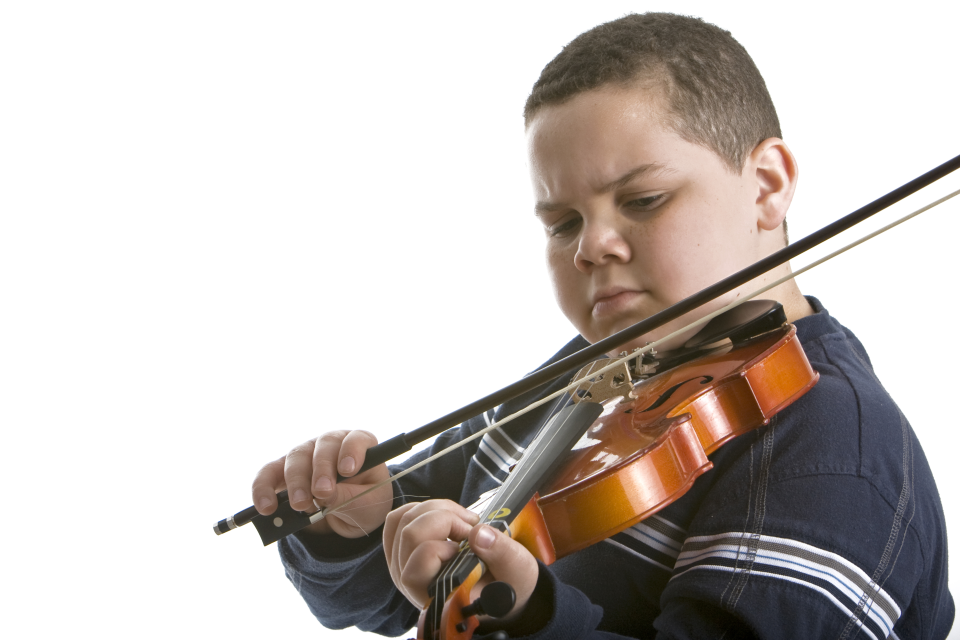
- by Karen Casio
- March 6, 2023
- Uncategorized
- Comments:7
It is reasonable for parents to be hesitant about the cost of purchasing or renting an
instrument not knowing whether their budding musician’s enthusiasm will endure the weekly lessons and daily practicing. Often, parents will look for cheaper alternatives focusing solely on the price. However, it is also important to be aware of the distinct differences between quality and inferior student instruments. Quality instruments ensure your child’s success.
The best place to start looking for a quality instrument is with string specialists like those at Bernhardt House of Violins (BHV). Knowledge is power and the more you know about bowed instruments, the better insight you will have regarding their craftsmanship and playability. This will lead you into making a well-informed decision which can save you time and money in the end.
The body: The body of quality student instruments is crafted from solid pieces of seasoned tonewoods of spruce and maple. These woods are light, yet strong, dense and flexible. The spruce and maple planks are dried to safeguard that the maximum amount of moisture is removed before working with the wood.
Many poor-quality student instruments found outside the canopy of string professionals are made from a variety of non-traditional woods. At times, when searching online the site description does not indicate the type of woods used. Additionally, those that specify solid spruce and/or maple may not always allow the wood to age and dry sufficiently. This could put the instrument at risk for further shrinkage causing damage that might render it beyond repair.
The fittings: On well-made student instruments the pegs and fingerboard are made of
ebony. Ebony is selected over other woods because of its strength and stability. An
ebony fingerboard, properly curved, is able to withstand the demands of young students ensuring their potential success.
However, substandard instruments generally contain fittings made of a variety of woods which are often painted or stained black to resemble ebony. These woods do not have the durability of ebony to withstand normal daily use which can hinder the progress of a beginning student. Within a short amount of time the instrument will rapidly deteriorate requiring it to be replaced. For example, non-ebony pegs can break while tuning the strings.
The bridge and soundpost: On skillfully crafted instruments the bridge is cut to specific dimensions with the top carefully arched allowing each string to be bowed separately. Also, the feet of the bridge are cut to the contour of each individual instrument and located within the inner notches of the f -holes. The bridge supports the tension on the strings between the pegs and the tailpiece. Precise alignment of the bridge along with a carefully sized and positioned soundpost transposes the vibrations created between the bow and the strings into music, ensuring the best possible
production.
On student instruments of lesser quality, the bridge may not be properly cut. The curve
at the top of the bridge may also be incorrect. This will make bowing a single string nearly impossible. Likewise, if the feet of the bridge are not cut properly it will fall over.
This could lead to significant damage and costly repairs. The bridge may also be
misaligned and not correctly set at the f -holes. This not only affects the tension on the
strings, but also reduces the quality of sound being produced from the soundpost. In addition, a soundpost not properly fit can crack the top and/or back of the instrument.
CAUTION: Any website stating you can install the bridge yourself should be considered
a red flag! This requires the skills of a trained repairman to guarantee the integrity of the instrument and sound produced.
The bow: The bow is an essential component when playing a stringed instrument.
Student bows must be strong enough to hold up under the trials of daily life in the hands of a young musician. Here at BHV, we use fiberglass bows which are exceptional in strength and not easily broken. Each part of the bow is crafted with strong traditional materials such as ebony, leather and nickel. These characteristics make for easy
bowing as the beginner focuses on learning new skills.
Like the instruments, many bows sold outside the setting of string professionals are
frequently made from low-grade woods. It is common for these bows to have a warped
stick and lack balance, seldom holding up for beginning students. Quite frequently, the
screw at the end of the bow malfunctions in either tightening or loosening the hair
making the bow difficult to use. At first, it may not be noticeable, but after a few lessons
the need for an upgrade will be evident.
Although it may seem to cost more, purchasing or renting a well-crafted student
instrument not only makes sense, it can also save you money. When it comes to quality instruments and the durability needed for daily practicing, the value is in the details and the best way to see these details first-hand is to visit your local strings specialist.
At Bernhardt House of Violins, “Strings are our Specialty”. Our rental programs allow a
portion of your monthly payment to accrue which can be put toward the purchase of the student instrument or toward the purchase of one of our step-up instruments. Our
associates can assist you in getting the right plan that works best for you.
Bernhardt House of Violins is experienced and knowledgeable. Our quality instruments
will ensure your child’s success.

